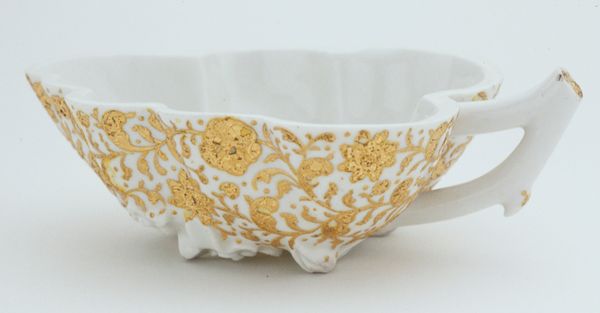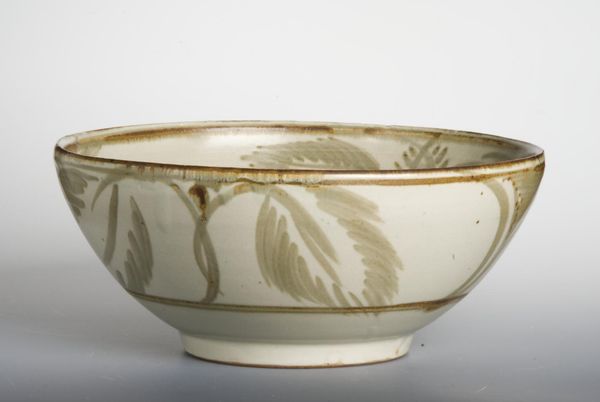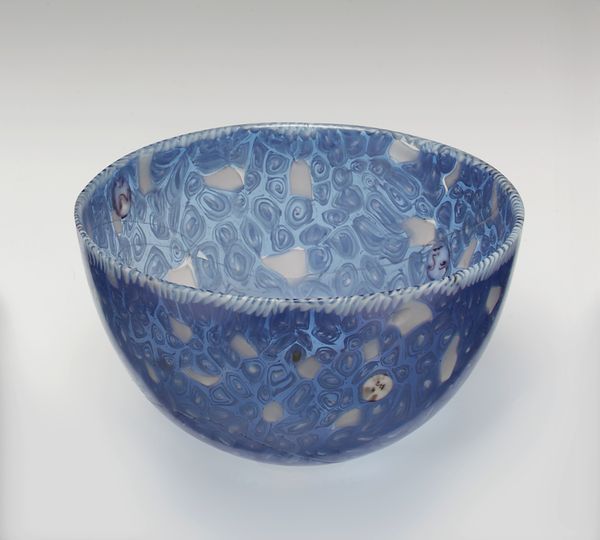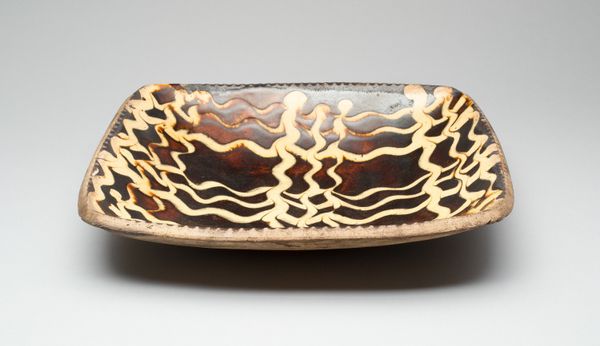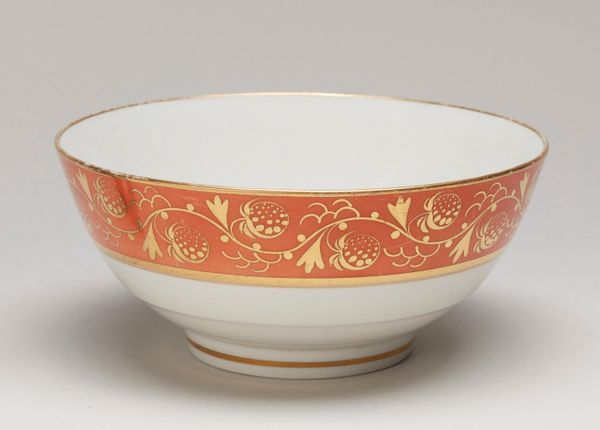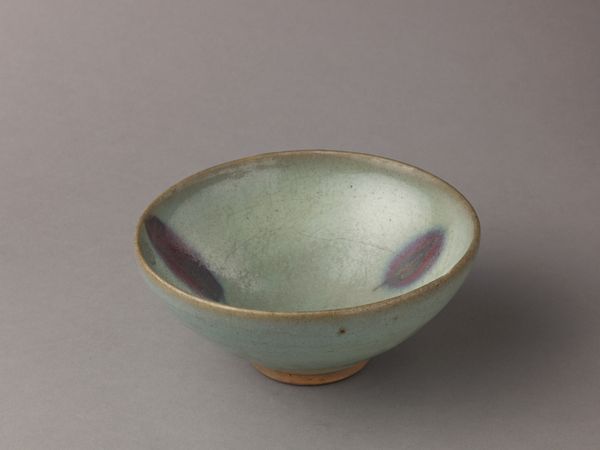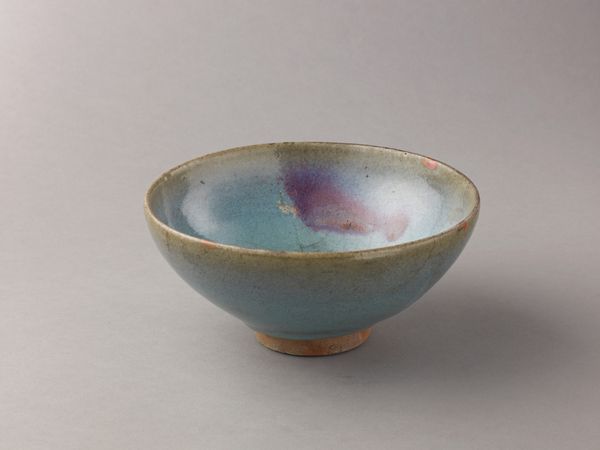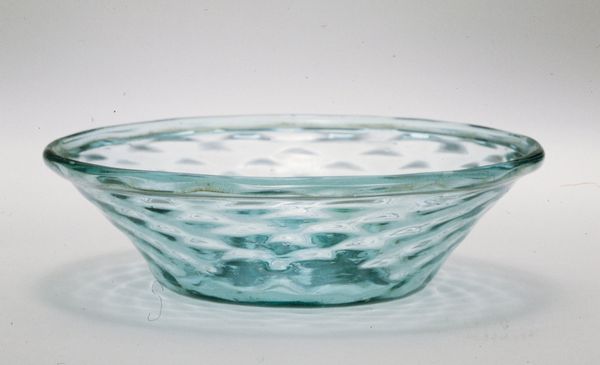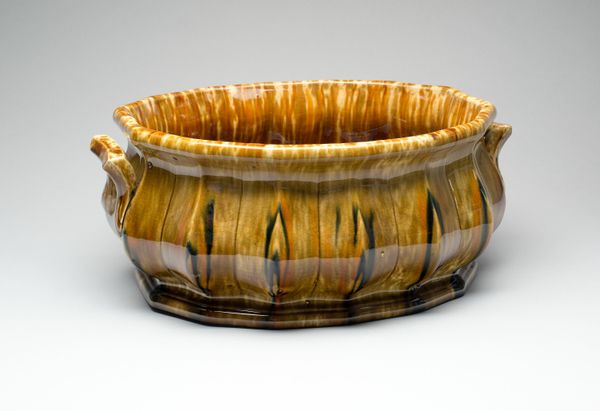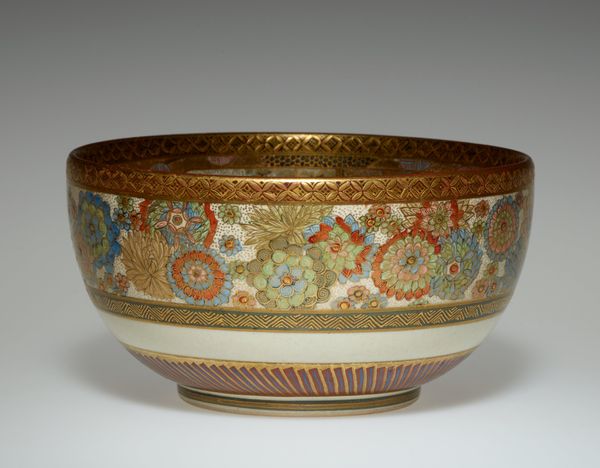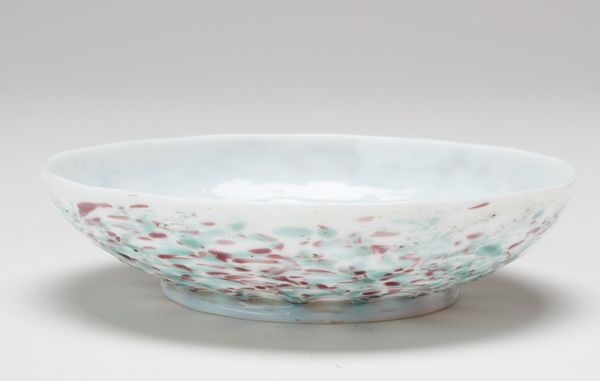
ceramic, earthenware
#
asian-art
#
ceramic
#
earthenware
#
geometric
#
decorative-art
Dimensions: H. 9.1; Diam. 17.0 cm
Copyright: Public Domain
This is a bowl created by Kôzan Makuzu, a Japanese artist who lived from 1842 to 1916. Look closely at the leaves encircling the bowl; they aren't just decorative. In East Asian art, grape leaves are a symbol of abundance and prosperity. Consider how these motifs, seemingly simple, echo across time. We see similar botanical patterns in ancient Roman frescoes, symbolizing fertility and the bounty of nature. Even in Christian iconography, grapevines appear, representing the blood of Christ and spiritual nourishment. But here, the golden outlines add another layer. Gold, universally, signifies value, luxury, and the divine. The juxtaposition of natural forms with precious metal creates a tension, perhaps reflecting humanity's complex relationship with the natural world—our desire to both celebrate and control it. These symbols are not static; they evolve. This bowl reminds us that the visual language of humanity is a continuous, ever-changing river, flowing from the past into the present.
Comments
No comments
Be the first to comment and join the conversation on the ultimate creative platform.

